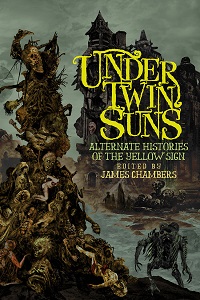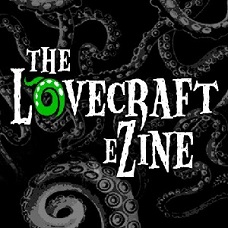
Sister, Maiden, Monster is the latest novel by Lucy A. Snyder, a horror writer whose work I adore. I’ve previously discussed her impact on my writer’s journey in my Women in Horror Month article from 2020, which is the same year I wrote an enthusiastic review of her short story collection, Halloween Season. Last month, while perusing my local Barnes and Noble on my birthday, I came across a copy of Sister, Maiden, Monster a day before its release. I went home and read it in a flash.
Spoilers Below
Broadly speaking, Sister, Maiden, Monster reminded me a little of Arthur C. Clarke’s Childhood’s End. That’s a novel that I think should be discussed more in horror circles, especially among cosmic horror fans, but I digress. Childhood’s End has a similar short, tight page count and deals with an end of the world scenario brought about by contact with an alien species. Furthermore, like Childhood’s End, Sister, Maiden, Monster grew out of a previously published short story (the 2012 Bram Stoker Award Winning “Magdala Amygdala”). That’s where the comparisons end though. Snyder’s work blazes with its own unique fire.
This novel is told in three sections which correspond to three different protagonists. The first section belongs to Erin, who is infected with a virus that transforms her into an eldritch beast. This section is the one expanded from “Magdala Amygdala.” The second section belongs to Savannah, a woman who gets off on death and does the bidding of the Old Ones who seeded the virus that transformed Erin. This part of the novel is also expanded from a previously published short story. Due to Sister, Maiden, Monster being mostly made up of two previously published works, I believe that technically makes it a fixup novel. That’s just an interesting tidbit for any writers reading this. In the last section, we get Mareva. Unlike the prior two protagonists, she’s much more reliable as a narrator, but she’s unfortunately chosen to be the brood mare for the Old Ones’ offspring and witnesses the end of days.
Okay, I just went through a lot. Hope you’re still with me. To sum it all up, this novel rocks. Snyder managed to craft a narrative where each protagonist’s section informs and connects to the next without getting convoluted. Both the Erin and Savannah bits focus heavily on sex and gore, while Mareva’s is relatively tame. This change in focus is partially due to the fact that Erin and Savannah revel in those things and Mareva does not. To be sure, Mareva’s section has gore, but there’s no sex to be found, which is a good contrast with the rest of the book. All the women in the novel undergo monstrous transformations, but whereas Erin and Savannah accept their change, as much as they can, Mareva rejects hers. This sets up a potential sequel in the post-apocalyptic wasteland left at the end of this work, and I can’t wait to read what comes next.
Okay, I better wrap this up, or I’ll spend another four paragraphs rambling about stuff I liked in this book. One last thought before I conclude, Snyder is a master of monsters. The eldritch beasts that the virus in the novel creates are a horrible form of life that is well thought out and believable due to the copious details Snyder provides about their workings and life cycle, which also reminded me a little of humanity’s fate in Childhood’s End. Okay, one more quick thing. If you’re a fan of Robert W. Chamber’s The King in Yellow, you’ll love this tale’s ending. In closing, I’ll say that I wasn’t sure I’d be able to enjoy virus-related tales post-Covid, but Sister, Maiden, Monster proved I still had room in my heart for reading about the collapse of civilization.
P.S.
I conveyed to Lucy A. Snyder how much I loved this novel when she visited Midtown Scholar on her book tour. Thanks to a little too much caffeine, I came off more manic than intended, but it was great getting to hear her talk about this story. One thing the interviewer (author Tara Stillions Whitehead) mentioned that I heartily agreed with was that Sister, Maiden, Monster is a novel without a saggy middle. It keeps ramping up from the first pages. If you’re into horror and cool with some gore and sex, you will love this novel.











